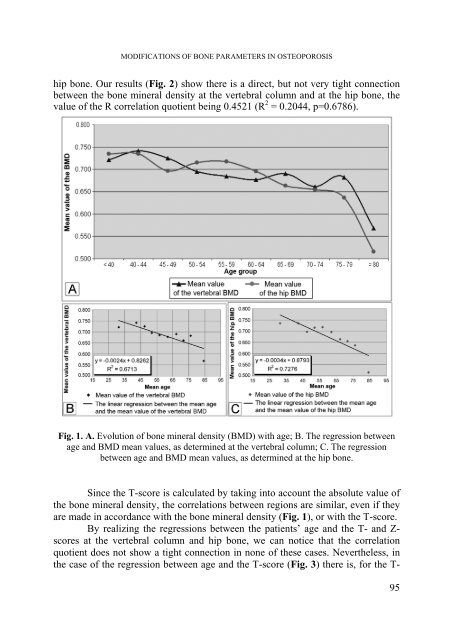biologia - Studia
biologia - Studia
biologia - Studia
You also want an ePaper? Increase the reach of your titles
YUMPU automatically turns print PDFs into web optimized ePapers that Google loves.
MODIFICATIONS OF BONE PARAMETERS IN OSTEOPOROSIS<br />
hip bone. Our results (Fig. 2) show there is a direct, but not very tight connection<br />
between the bone mineral density at the vertebral column and at the hip bone, the<br />
value of the R correlation quotient being 0.4521 (R 2 = 0.2044, p=0.6786).<br />
Fig. 1. A. Evolution of bone mineral density (BMD) with age; B. The regression between<br />
age and BMD mean values, as determined at the vertebral column; C. The regression<br />
between age and BMD mean values, as determined at the hip bone.<br />
Since the T-score is calculated by taking into account the absolute value of<br />
the bone mineral density, the correlations between regions are similar, even if they<br />
are made in accordance with the bone mineral density (Fig. 1), or with the T-score.<br />
By realizing the regressions between the patients’ age and the T- and Z-<br />
scores at the vertebral column and hip bone, we can notice that the correlation<br />
quotient does not show a tight connection in none of these cases. Nevertheless, in<br />
the case of the regression between age and the T-score (Fig. 3) there is, for the T-<br />
95
















